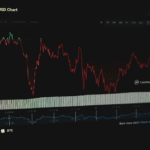
The world of digital assets, particularly cryptocurrencies, is characterized by extreme volatility. The rapid price fluctuations make it essential for traders and investors to employ advanced risk management strategies. Below, we explore several sophisticated techniques tailored for managing risk in these high-volatility markets.
1. Diversification Beyond Bitcoin
Diversification is a fundamental risk management strategy, especially in volatile markets. In the digital asset space, this means investing not only in Bitcoin but also in a range of other cryptocurrencies, including altcoins, stablecoins, and emerging tokens. By spreading investments across different assets, sectors (such as DeFi and NFTs), and market capitalizations, investors can reduce the impact of a significant downturn in any single asset or sector.
For example, a balanced portfolio might include a mix of Bitcoin, Ethereum, stablecoins, and promising altcoins, each serving a different purpose within the portfolio. This approach can help cushion against extreme volatility in any one area while capturing growth opportunities across various segments of the digital asset market.
2. Use of Derivatives: Futures and Options
Derivatives, such as futures and options, are powerful tools for hedging against volatility. Futures contracts allow investors to lock in a price for buying or selling an asset at a future date, providing a hedge against price swings. Options, on the other hand, give the right but not the obligation to buy or sell at a predetermined price, offering more flexibility. Both strategies help manage risk by providing a way to secure profits or limit losses in unpredictable markets.
For instance, if an investor anticipates a market downturn, they might use put options to sell an asset at a higher price than the market offers during the downturn, thus protecting their investment from significant losses.
3. Hedging with Stablecoins
Stablecoins, which are pegged to fiat currencies, offer a reliable hedge against market volatility. By converting more volatile assets into stablecoins during turbulent market conditions, investors can preserve their portfolio’s value. Stablecoins serve as a safe haven within the crypto market, providing liquidity and stability without needing to exit the digital asset space entirely.
4. Stress Testing and Scenario Analysis
Stress testing involves simulating extreme market conditions to assess how a portfolio would perform under adverse scenarios, such as a major regulatory crackdown or a sudden market crash. Scenario analysis provides insights into potential vulnerabilities and helps investors prepare contingency plans. This proactive approach ensures that portfolios are resilient enough to withstand unexpected shocks, thereby reducing the likelihood of catastrophic losses.
5. Continuous Monitoring and Real-Time Analytics
The ability to monitor market conditions in real-time is vital for effective risk management. Advanced dashboard tools that provide real-time data and analytics can help investors track performance metrics, market trends, and risk levels. Setting up alert systems to notify investors of significant market events or when certain risk thresholds are breached allows for timely adjustments to strategies.
Discover Kenson Investments
At Kenson Investments, our digital asset specialists utilize over 60 years of combined experience to guide you through the complexities of blockchain asset investments. Experience our commitment to transparency and cutting-edge solutions in the dynamic world of digital assets.
Let us be the change you seek in this market!














